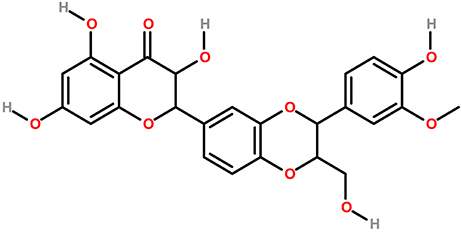- 1Department of Pharmaceutical Sciences, Faculty of Technology, Kumaun University, Nainital, India
- 2Department of Pharmaceutical Botany, “Iuliu Hatieganu” University of Medicine and Pharmacy, Cluj-Napoca, Romania
- 3ICHAT and Institute for Life Sciences, University of Agricultural Sciences and Veterinary Medicine, Cluj-Napoca, Romania
- 4Division BIOCEV, Institute of Molecular Genetics, Academy of Sciences of the Czech Republic, Prague, Czechia
- 5Applied Biotechnology Research Center, Baqiyatallah University of Medical Sciences, Tehran, Iran
- 6Institute of Genetics and Animal Breeding of the Polish Academy of Sciences, Jastrzebiec, Poland
- 7School of Medical Sciences, Universiti Sains Malaysia, Kota Bharu, Malaysia
- 8Department of Public Health, Xi'an Jiaotong-Liverpool University, Suzhou, China
- 9Department of Pharmacognosy, University of Vienna, Vienna, Austria
- 10Department of Vascular Biology and Thrombosis Research, Centre for Physiology and Pharmacology, Medical University of Vienna, Vienna, Austria
by Tewari, D., Mocan, A., Parvanov, E. D., Sah, A. N., Nabavi, S. M., Huminiecki, L., et al. (2017). Front. Pharmacol. 8:519. doi: 10.3389/fphar.2017.00519
In the original article, there was a mistake in the legend for Figure 4 as published (the spelling of isosilibin was incorrect). The correct legend appears below.
In the original article, there was a mistake in Figure 4 as published (CH3 group was missing in the Silybin structure). The corrected Figure 4 appears below.

Figure 4. The chemical structures of phytoconstituents of Milk thistle (A) Silybin and (B) Isosilybin.
The authors apologize for these errors and state that this does not change the scientific conclusions of the article in any way.
Conflict of Interest Statement
The authors declare that the research was conducted in the absence of any commercial or financial relationships that could be construed as a potential conflict of interest.
The handling Editor declared a past co-authorship with the author SN.
Keywords: jaundice, bilirubin, oxidative stress, traditional use, phytoconstituents, serum enzymes, alkaline phosphatase
Citation: Tewari D, Mocan A, Parvanov ED, Sah AN, Nabavi SM, Huminiecki L, Ma ZF, Lee YY, Horbańczuk JO and Atanasov AG (2017) Corrigendum: Ethnopharmacological Approaches for Therapy of Jaundice: Part II. Highly Used Plant Species from Acanthaceae, Euphorbiaceae, Asteraceae, Combretaceae, and Fabaceae Families. Front. Pharmacol. 8:690. doi: 10.3389/fphar.2017.00690
Received: 19 August 2017; Accepted: 15 September 2017;
Published: 06 October 2017.
Edited and reviewed by: Jianbo Xiao, University of Macau, China
Copyright © 2017 Tewari, Mocan, Parvanov, Sah, Nabavi, Huminiecki, Ma, Lee, Horbańczuk and Atanasov. This is an open-access article distributed under the terms of the Creative Commons Attribution License (CC BY). The use, distribution or reproduction in other forums is permitted, provided the original author(s) or licensor are credited and that the original publication in this journal is cited, in accordance with accepted academic practice. No use, distribution or reproduction is permitted which does not comply with these terms.
*Correspondence: Atanas G. Atanasov, YS5hdGFuYXNvdi5tYWlsYm94QGdtYWlsLmNvbQ==
†These authors have contributed equally to this work.
 Devesh Tewari
Devesh Tewari Andrei Mocan
Andrei Mocan Emil D. Parvanov4
Emil D. Parvanov4 Archana N. Sah
Archana N. Sah Seyed M. Nabavi
Seyed M. Nabavi Zheng Feei Ma
Zheng Feei Ma Yeong Yeh Lee
Yeong Yeh Lee Jarosław O. Horbańczuk
Jarosław O. Horbańczuk Atanas G. Atanasov
Atanas G. Atanasov